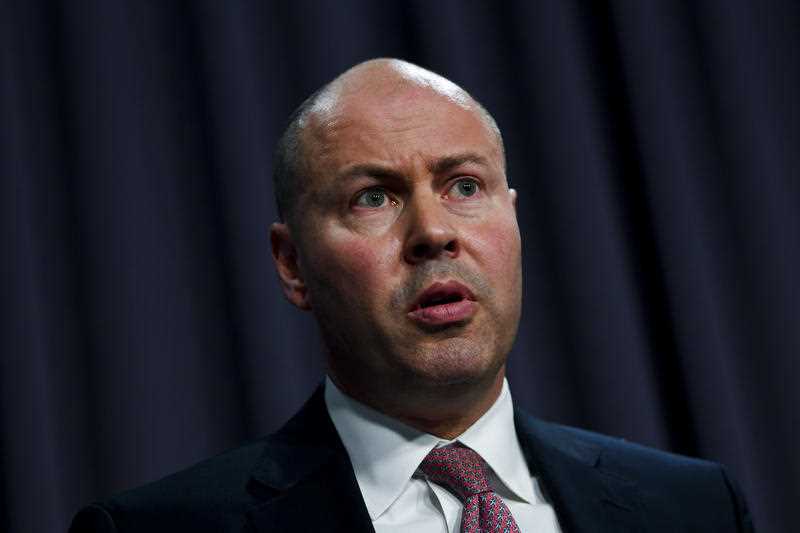The Australian economy is set to take a whack from the impact of half of the population being in lockdown, but Treasurer Josh Frydenberg is confident it won’t result in a second recession in as many years.
New figures show employment was already on the slide even before the latest round of lockdowns that take in NSW, Victoria and South Australia.
But despite the marked change in economic fortunes, Prime Minister Scott Morrison said there would be no need for a budget update before the usual midyear review in December.
“It is is our sincere hope that we would see the lockdowns, particularly in Victoria and South Australia, be brief ones,” Mr Morrison told reporters on Thursday.
But he said in NSW, Australia’s biggest state economy, the situation was far more serious, with the virus having moved beyond Greater Sydney into some regional locations.
Mr Frydenberg expects the economy will contract in the September quarter with Treasury estimating the current restrictions are costing the economy $300 million a day.
Sydney and Melbourne alone account for about half of the economy’s output.
“So it is a big hit to the economy,” Mr Frydenberg told the Nine Network.
“We will see it play out in the unemployment numbers. We will see it play out in the growth numbers.”
Asked whether Australia would avoid an economic contraction in the December quarter, Mr Frydenberg noted the economy bounced back much stronger than initially thought after last year’s recession.
“I’m confident that while the September quarter will be tough, as long as we’re able to get on top of the virus, then we’ll continue to see Australia’s strong economic recovery,” he said.
A recession is usually represented by two consecutive quarters of economic contraction.
Labor’s finance spokeswoman Katy Gallagher blamed Australia’s economic situation on the government’s poor vaccination rollout, with just 12 per cent of the population inoculated after six months.
“It’s put us at risk economically and our health as well,” she told Sky News.
New Australian Bureau of Statistics figures showed payroll jobs fell one per cent in the fortnight to July 3, following a 0.4 per cent rise in the previous two weeks.
ABS head of labour statistics Bjorn Jarvis said the latest fortnight of data included lockdowns in four of the eight capital cities.
This ranged from a fall of 1.4 per cent in NSW and the Northern Territory, to 1.1 per cent in Western Australia and 1.0 per cent in Queensland.
The report provides a guide to the full monthly labour force report.
“The outlook for the labour market is highly uncertain with Australia’s two largest workforces both in lockdown for the foreseeable future,” Commonwealth Securities senior economist Ryan Felsman said.
Still, other data showed businesses were in good shape heading into this latest downturn.
The National Australia Bank’s quarterly business survey showed conditions were at a record high in the three months to June, with forward orders also close to a record peak.
However, with the survey conducted over May 18 to June 10, it only partially covered the earlier Victorian lockdown in late May, and precedes the current round of restrictions.
“So, while the forward indicators point to strong outcomes through Q3 and beyond, current activity is likely to be disrupted until these lockdowns end,” NAB chief economist Alan Oster said.
By Colin Brinsden, AAP Economics and Business Correspondent in Canberra
Get all the latest Canberra news, sport, entertainment, lifestyle, competitions and more delivered straight to your inbox with the Canberra Daily Daily Newsletter. Sign up here.



